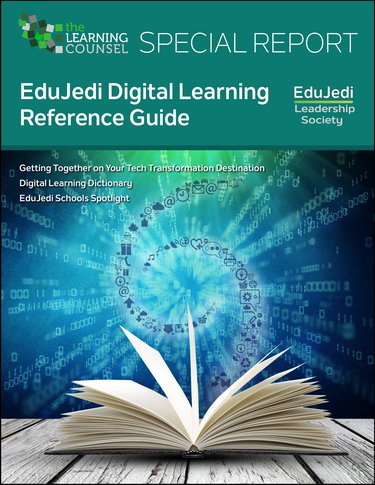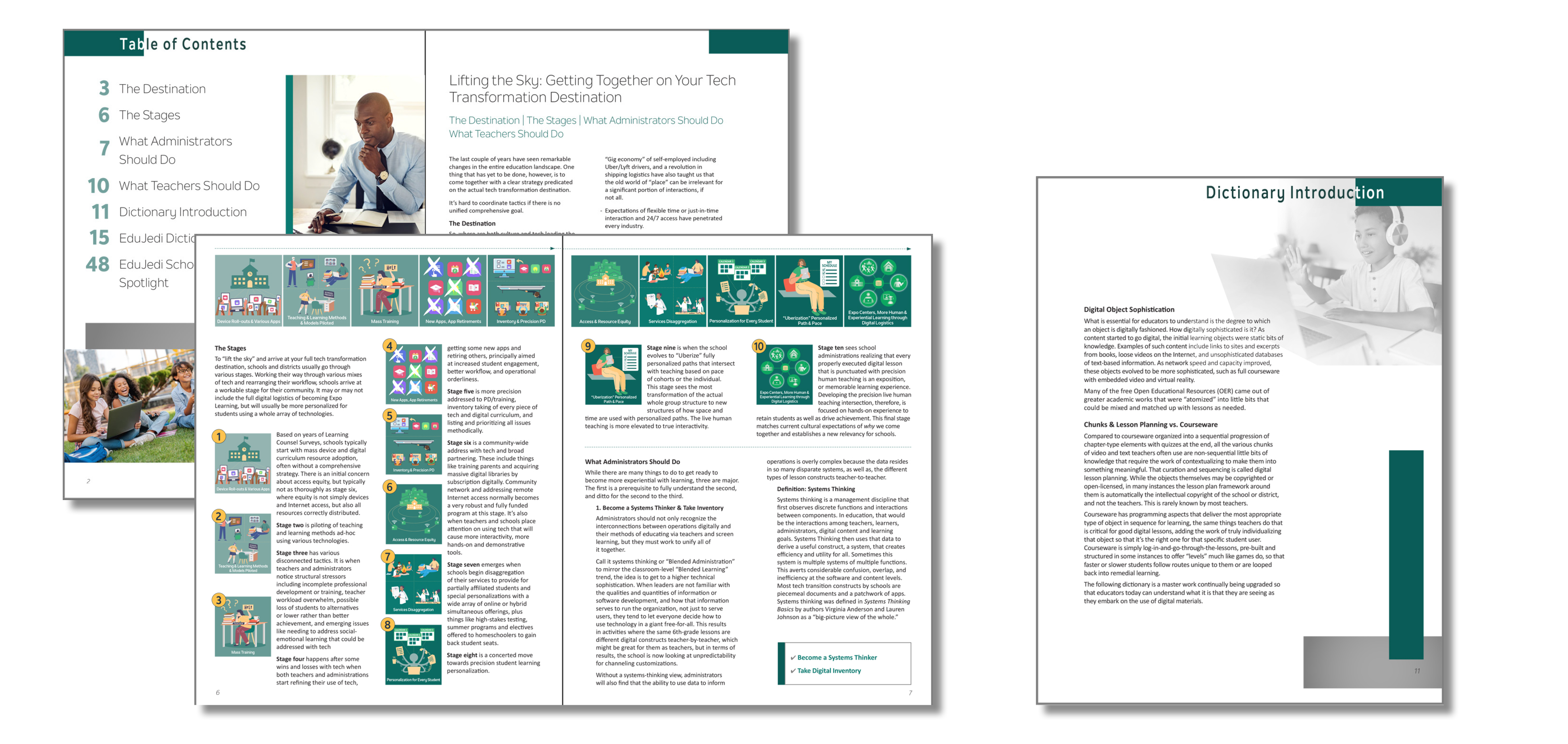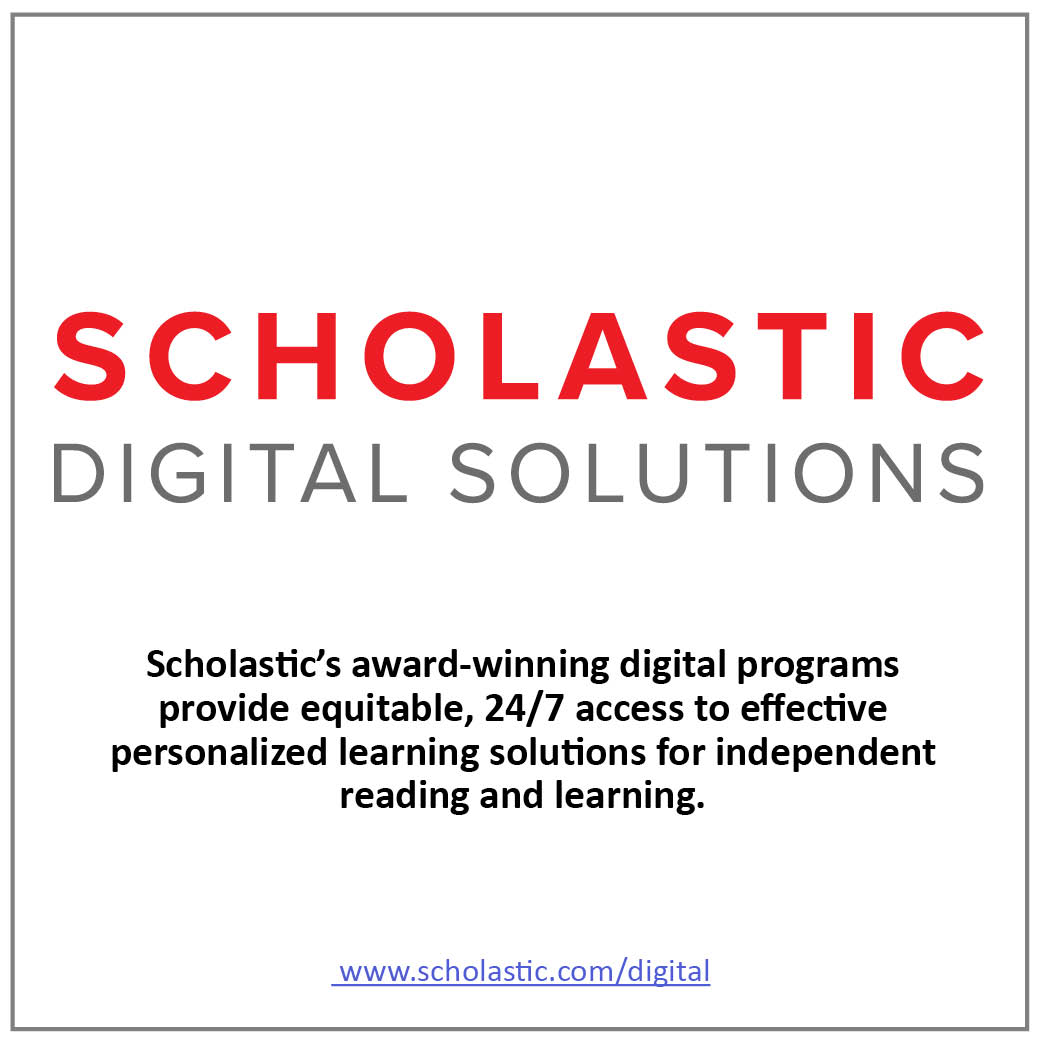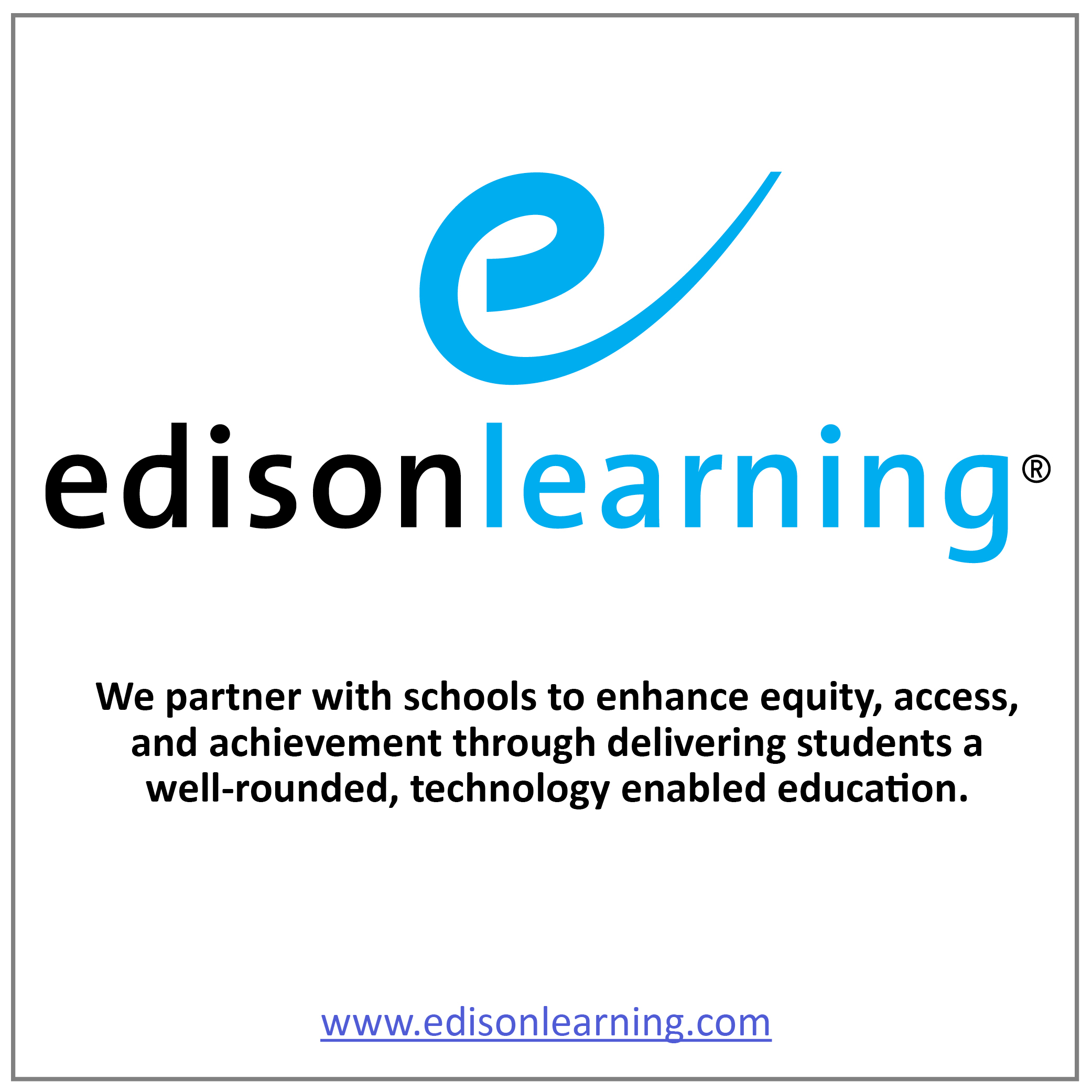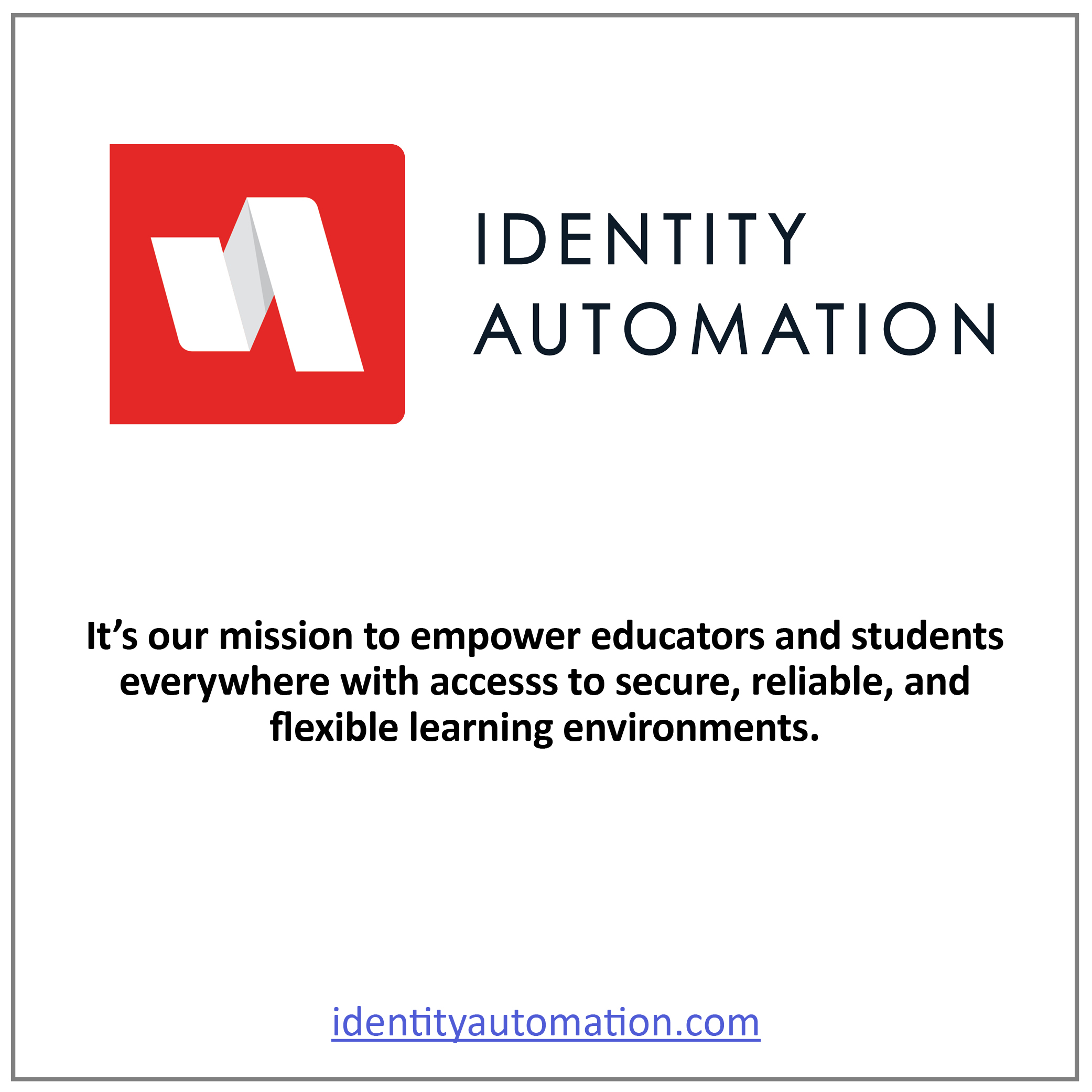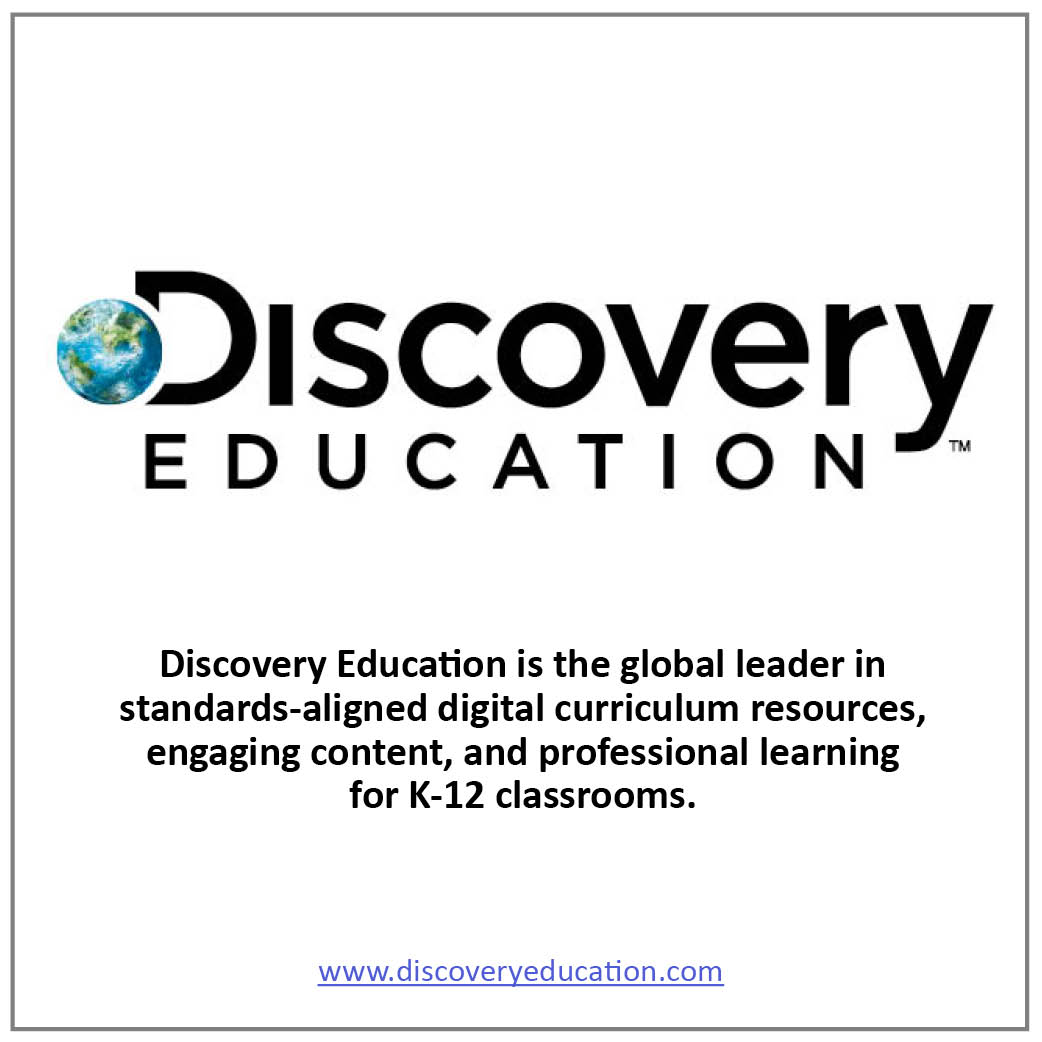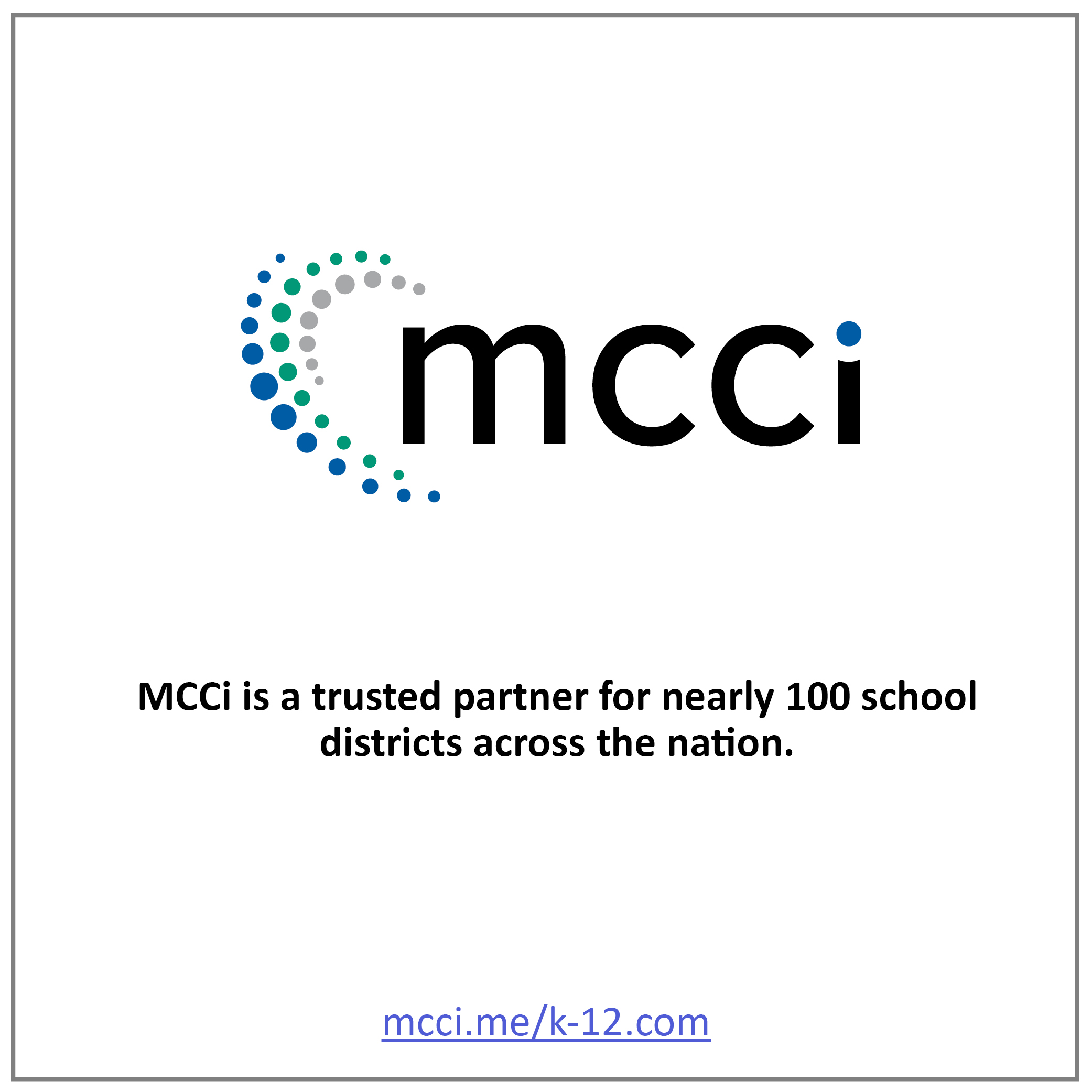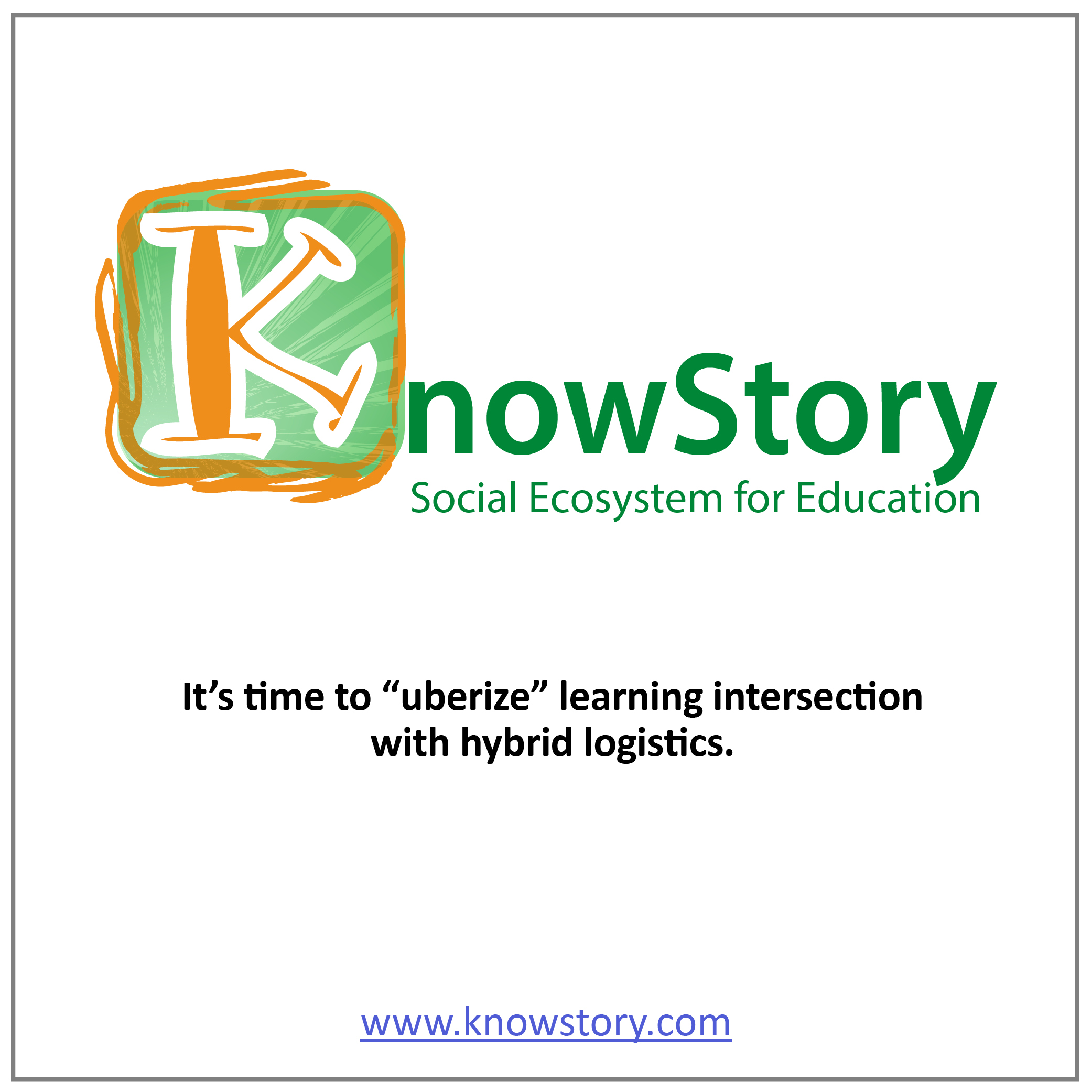EduJedi Digital Learning Reference Guide
The last couple of years have seen remarkable changes in the entire education landscape. One thing that has yet to be done, however, is to create a clear strategy predicated on the actual tech transformation destination. The fact is, it’s hard to coordinate tactics if there is no unified comprehensive goal. In this Special Report, you’ll learn the roles needed by Administrators and Teachers, as well as the stages to expect as you progress along your own Tech Transformation. And most importantly, you’ll understand your destination in detail.
Also in this report, you’ll get the most up to date version of the EduJedi Dictionary, exhaustively crafted by top EduJedi to help you understand the tech landscape and containing nearly 200 definitions that focus on the characteristics that describe learning software tools and their functions. Today’s systems and tools provide mechanisms or processes that prove value because they simplify educators and students’ tasks, freeing up time and attention for learning activities and particularly teacher personalization for each student. This dictionary is organized by sections to logically introduce readers to both complex and simple terms.
All during the pandemic, parents and students have continued their shopping for digital learning. At an estimated total of $28.5 billion and a 15 percent growth rate, American consumers spent almost twice as much on digital learning apps and resources as schools spent. Major gainers on the consumer side include full subscription curriculum for homeschoolers. Many companies who normally sold to schools created or expanded consumer sales in recent years and have been seeing explosive growth. - The pandemic taught parents that at least some learning can be done remotely with digital devices. Many students flourished in this environment, but not all.
Trends driven by mobile devices like Internet retailing, internet banking, remote work, the “Gig economy” of self-employed including Uber/Lyft drivers, and a revolution in shipping logistics have also taught us that the old world of “place” can be irrelevant for a significant portion of interactions, if not all of them. Expectations of flexible time or just-in-time interaction and 24/7 access have penetrated every industry – including education.

